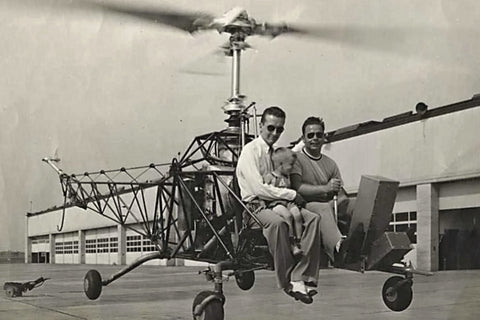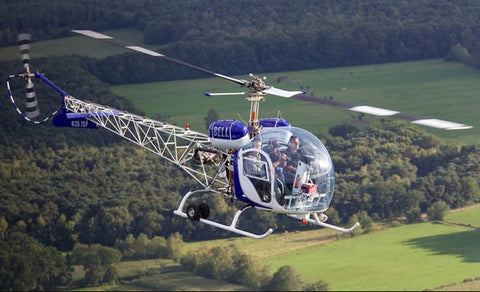Bell 47G : The Legendary Helicopter
In the world of aviation, certain aircraft manage to transcend the boundaries of time and technology, leaving an indelible mark on the industry. The Bell 47G helicopter is one such iconic aircraft that has not only stood the test of time but has also become a symbol of innovation and reliability in the field of rotorcraft. In this article, we'll delve into the rich history, design, and enduring legacy of the Bell 47G helicopter.
The Birth of a Legend

The story of the Bell 47 begins in the years following World War II when the demand for helicopters skyrocketed. Designed by Arthur M. Young and first flown in 1945, the Bell 47 quickly gained popularity for its simplicity, versatility, and reliability. It became the first helicopter certified for civilian use in the United States in 1946, marking a significant milestone in aviation history.
Design and Features

The Bell 47G, an upgraded version of the original model, brought several improvements to the table. The distinctive bubble canopy, a hallmark of the 47G, not only enhanced visibility for the pilot but also added a touch of elegance to its appearance. The open-framework tail boom and the iconic teardrop-shaped fuel tank contributed to its unique silhouette, making it easily recognizable in the skies.
Powered by a single 200 hp (150 kW) Franklin 6V4-200-C32 engine, the Bell 47G boasted a modest yet reliable powerplant. With a top speed of around 93 miles per hour and a range of approximately 214 miles, it proved to be a versatile workhorse in various applications, from agriculture to medical evacuation.
Versatility in Action

One of the key factors behind the enduring success of the Bell 47G was its adaptability to a wide range of roles. Originally designed for military reconnaissance, it quickly found its way into civilian applications, including agriculture, law enforcement, and emergency medical services. Its ability to take off and land vertically made it well-suited for operations in confined spaces, such as remote fields or urban environments.
In the agricultural sector, the Bell 47G became a familiar sight, equipped with spraying systems for crop dusting. Its agility and precision made it an invaluable tool for farmers looking to protect their crops efficiently. Additionally, the helicopter found use in the film and television industry, becoming synonymous with the early days of airborne cinematography.
Legacy and Cultural Impact

The Bell 47G helicopter not only left an indelible mark on the aviation industry but also became a cultural icon. Its appearances in popular media, such as the iconic TV series M*A*S*H, solidified its place in the public consciousness. The distinctive thumping sound of its rotor blades became synonymous with the image of a classic helicopter, and its timeless design continues to capture the imaginations of aviation enthusiasts worldwide.

As we reflect on the legacy of the Bell 47G helicopter, it's evident that its enduring appeal goes beyond its technical specifications. With its elegant design, versatility, and cultural impact, the Bell 47G remains a symbol of a bygone era while maintaining its relevance in the modern world. Whether soaring through the skies in the mid-20th century or gracing the screen in classic films and television shows, the Bell 47G has earned its place as a true legend in the history of aviation.

